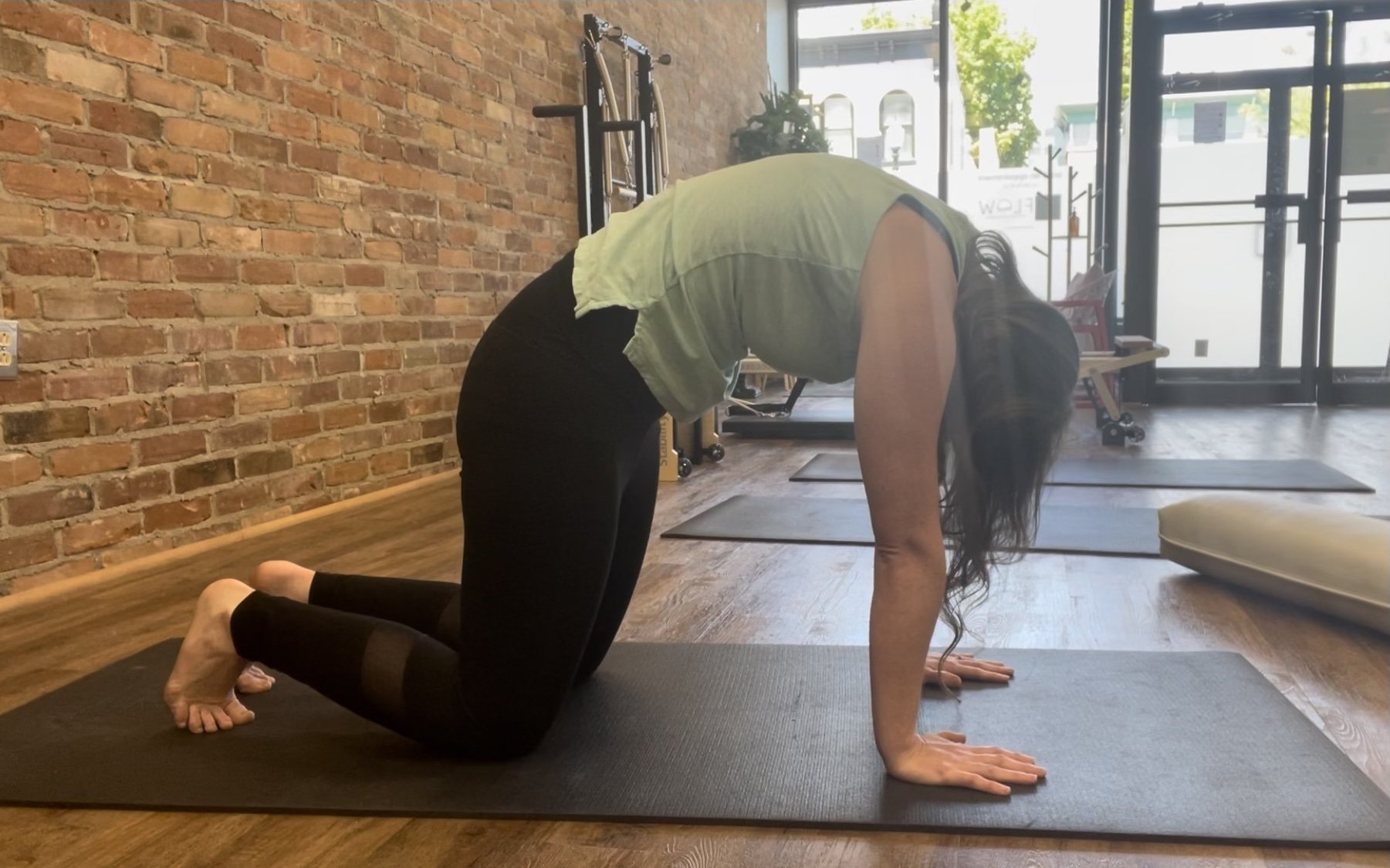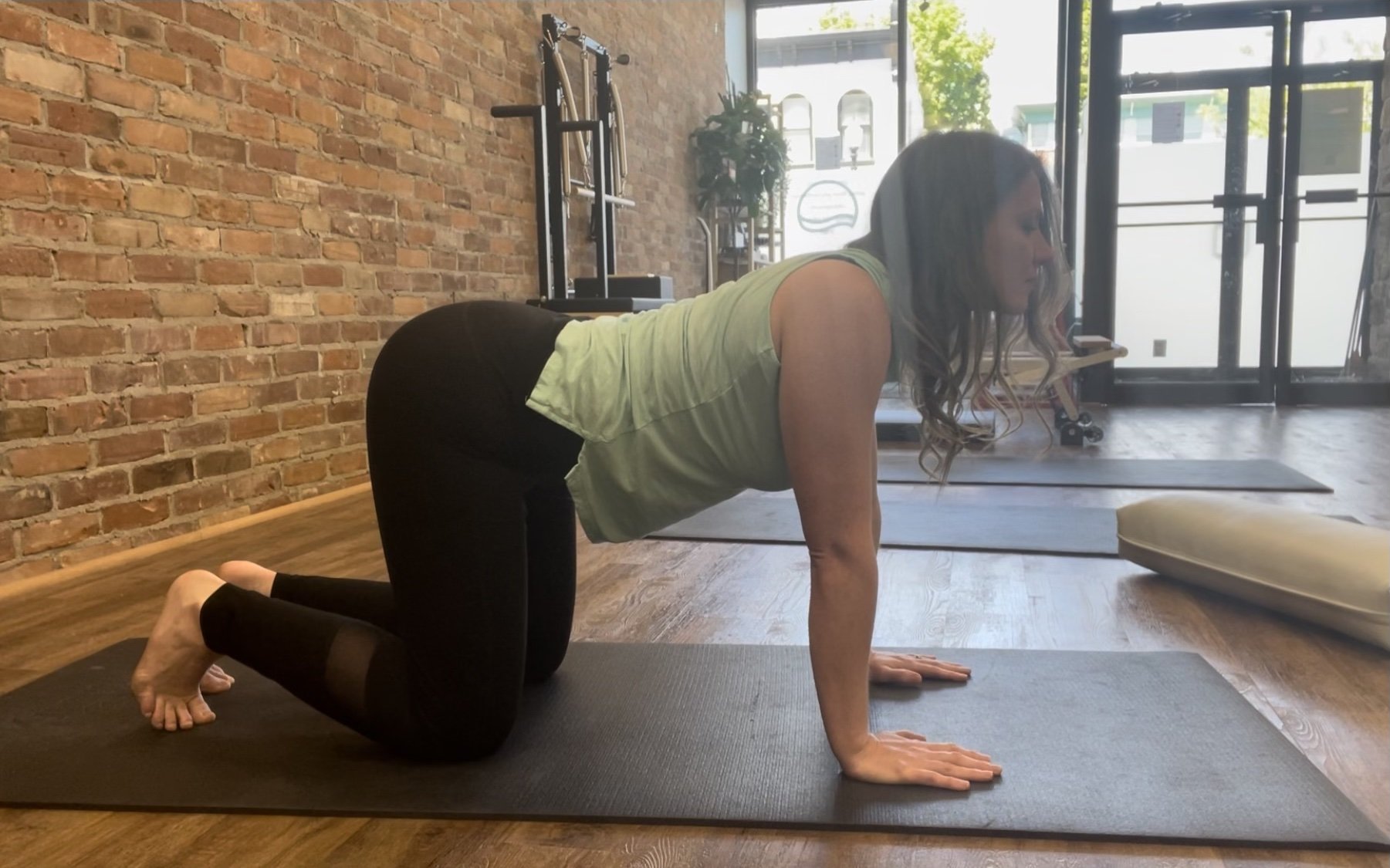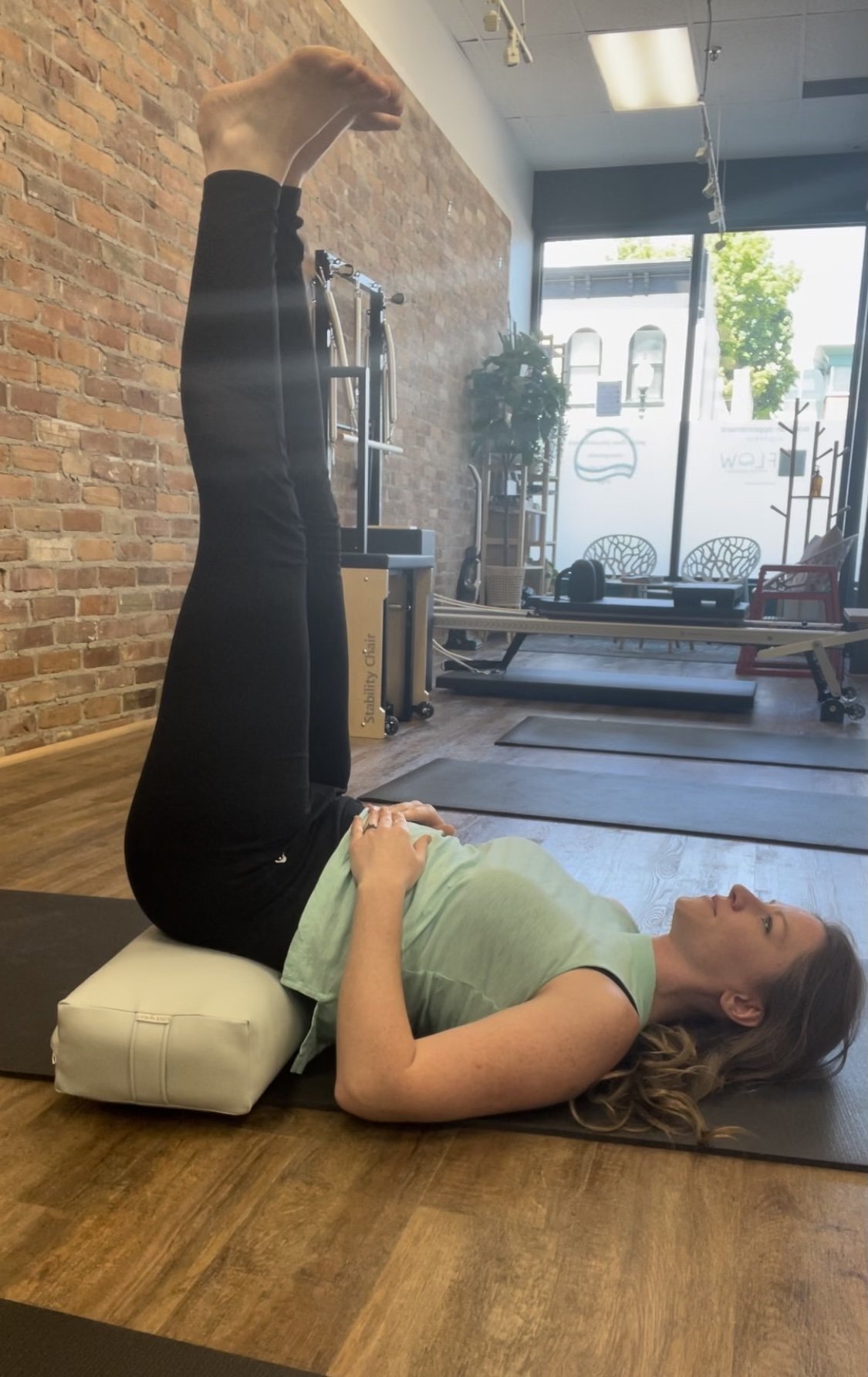Pelvic Floor Physiotherapy and Yoga
Do you have back or pelvic pain, leakage with activity or are struggling to return to exercise postpartum?
Physio yoga combines an assessment of your individual needs with the benefits of yoga practice. A safe and individualized program is created to address your symptoms through stretching, pelvic floor and core strengthening, and breathwork.
What is the Pelvic Floor?
The pelvic floor is a sling of muscles and connective tissue that is located at the base of your pelvis between the tailbone and pubic bones. These muscles collectively support your bladder, bowels, rectum, and (if present) uterus. Their coordinated contraction is important for stabilizing the pelvis, sexual function, urinary and fecal continence, and childbirth. Weakening of these muscles can lead to incontinence, pain with intercourse or pelvic pain. Alternatively, we can also have tension within the muscles of the pelvic floor which may also cause pelvic floor dysfunction. To put it lightly, they are a very important group of muscles! Dysfunction of this group can have significant effects on the body and on an individual’s mental wellbeing. These muscles are also part of your “core” allowing them to help support the body during movement preventing back pain. Along with the activity of the other “core muscles”, the pelvic floor also helps us manage pressure that is generated when we lift or when we cough or sneeze.
There are 4 main players of “the core”:
The Transverse Abdominis: this muscle wraps from front to back acting like a corset to stabilize the spine during movement.
The Diaphragm: attached to the base of the ribs creating a dome that moves with our breath.
Multifidus: small muscles that run along the spinal column giving it the stability
The Pelvic Floor: a sling of 3 muscle layers at the base of the pelvis, important for support and function of the bladder, bowels and sex organs.
The four muscle groups making up the “core” work together to create stability as we move through our asanas which improves our stability as we move through life. Strength and coordinated activity of these muscle groups prevents injury of the spine and plays an important role in our pelvic health. As with any group of muscles, your pelvic floor can have tension or weakness altering its ability to function. Many changes in life can lead to these imbalances such as pregnancy, menopause, surgery, or chronic constipation. How we perform our activities and exercise can also affect our pelvic floor’s ability to contract, fully relax and coordinate with other muscles. All of which are essential for its normal function. Through yoga we learn proper posture, breath, and contraction of the pelvic floor during movement. We can then carry this over to functional activities such as lifting groceries or running to chase a toddler.
How Yoga Improves Pelvic Health?
Encouraging proper posture during movement
Strengthening the pelvic floor
Coordination of pelvic floor activation with movement ensuring that strength is there for you when you need it
Encouraging relaxation of the pelvic floor with meditation, breath and lengthening of these muscles
Coordination of breath with movement decreasing pressure within the abdomen
Downregulation of the sympathetic nervous system which can contribute to increased tension of the pelvic floor
According to a study conducted in 2022 by Quenfung, “Yoga had a very significant improvement on the physical indicators and mental health of the postpartum women.” Furthermore, the study ground demonstrated “Significant recovery compared to those who have undergone the traditional electromyography treatment.” (1)
Yoga goes beyond simply performing Kegels and allows you to integrate that strength and coordination into functional exercises that translate to improved function in real life!
What are My Favourite Asanas for Pelvic Health?
This can vary greatly between my patients based on what pelvic health concerns they have. If you are unsure if an exercise is right for you, an assessment of your concerns can be performed to steer us in the right direction. The following are a few of my favorite postures to try but it is important that you listen to your body, stop any exercise that increases your symptoms and speak with your pelvic health physical therapist.
Child’s Pose
Child’s Pose is wonderful for low back and tailbone pain. Try placing a block under your hips or chest if resting on the floor is difficult. For an added stretch, walk your hands off to one side and take a deep breath in, expanding the ribcage and deepening the stretch on the opposite side.
2. Cat Cow
While it is also wonderful for low back and pelvic pain, I love combining cat-cow with pelvic floor contractions and breath. Try breathing in as you open your chest followed by exhaling and contracting the pelvic floor as you curl your spine towards the sky.
3. Happy Baby
Another wonderful stretch to lengthen the pelvic floor and improve flexibility of the hips. This position is also wonderful if you are experiencing any tailbone pain. Taking deep breaths can allow for further lengthening of the pelvic floor, while rocking side-to-side can gently massage the low back against your mat.
4. Supported Waterfall
Lying with a pillow or bolster under the hips and your legs elevated can be a great position for decreasing pelvic pressure and congestion during pregnancy and to alleviate prolapse symptoms. For added benefit, use the pelvic floor muscles to pump fluid by performing repeated short contractions in this position.






